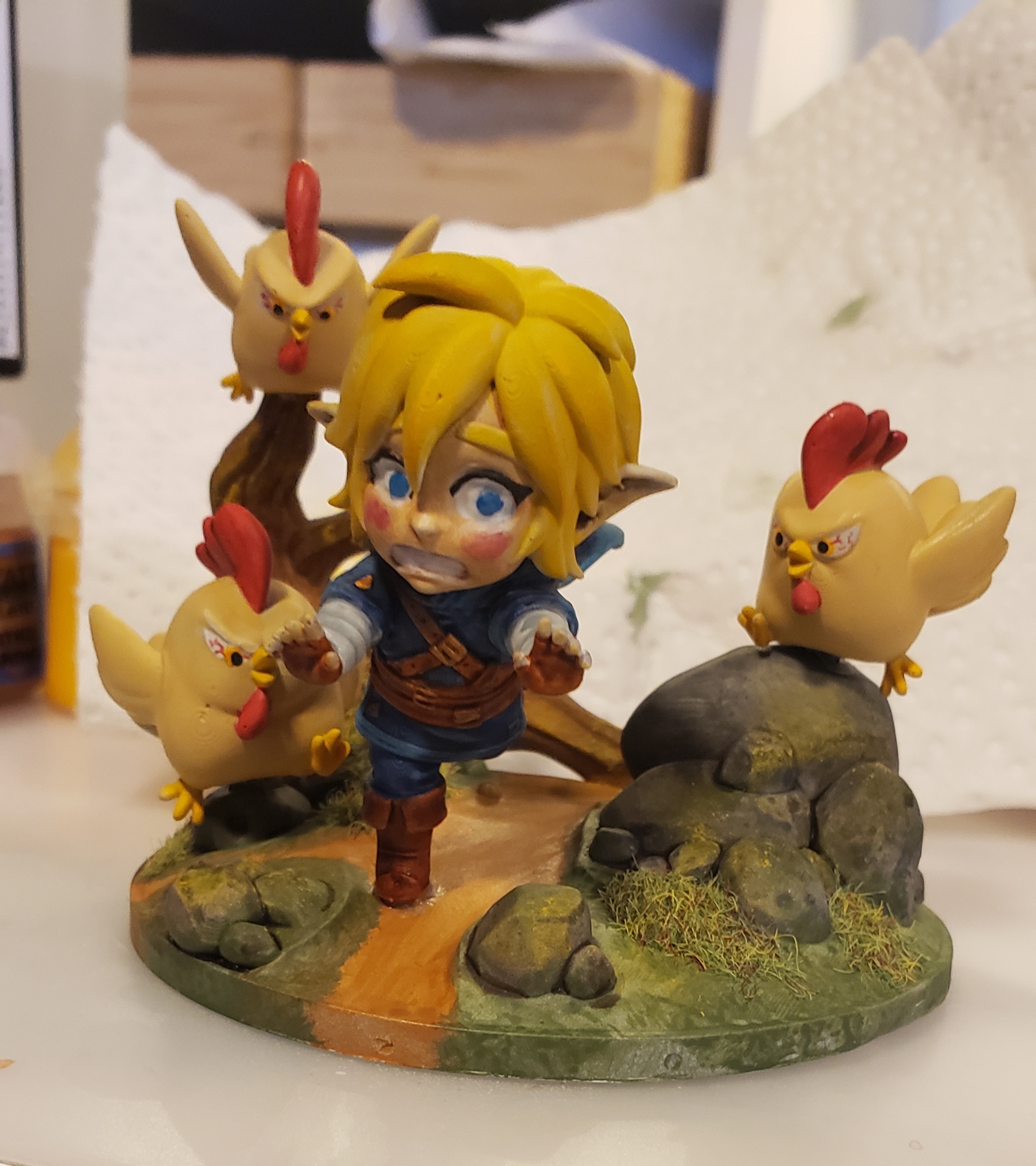

“This is the last straw” 😆
For anything important, use matrix instead of lemmy DMs.


“This is the last straw” 😆


Ghost licensing is predatory.
It’s easier to just wait until the ghost can be published in the public domain.
Blame Disney.

If it starts fine, but performance drops off a cliff after a while, it might be a heat issue.
I ended up putting such a flaky drive in a bag and wrapping a flexible icepack around it.
Not a great solution, but kinda good enough to get some data off of it.


allegedly saw Gamboa separate from the crowd of marchers in downtown Salt Lake City, move behind a wall and withdraw a rifle around 8 p.m., Redd said.
When the two men in vests confronted Gamboa with their handguns drawn, witnesses said Gamboa raised his rifle into a firing position and ran toward the crowd, said Redd.
That’s when one of the men dressed in the vests shot three rounds, hitting Gamboa and Ah Loo, said Redd. Gamboa, who police said didn’t have a criminal history, was wounded and treated before being booked into jail.
Emphasis mine. If that’s true, that could have become a mass shooting.
Still sucks to be the innocent bystander though.


If you have a microwave, follow the instructions in the bag.
I don’t have a glass lid
I’ve used a dinner plate as a lid in a pinch.
Careful it might get hot.


Yes, absolutely. Fuck the stuff you get at stores’ checkout.
I do mean something from a bank or union, it’s just instead of having a limit you can borrow from, you can prepay and do whatever transaction after.
Works fine for online places that only take credit.
You can usually get them even with shitty credit, because they’re not fronting you the money.


You can still probably get a prepaid credit card…
You just have to pay it upfront before doing the transaction.


I use this one:
https://play.google.com/store/apps/details?id=de.orrs.deliveries
It can usually get the status of most courriers unless they’re actively hostile against API/scraping.
Worst case you can still track status manually, or open the webpage.
It doesn’t track payment, but I don’t usually have a tracking number before paying.
I think you could technically add your own custom status entry.
I keep them as active until shipped and verified after which I mark them as completed.
Works well enough for my needs.


If she’s discussing said exit plans with you, make sure y’all have some bare minimum OpSec.
By that I mean… encrypted chat, phone locks, deleting history, etc.
Otherwise just being there to listen can make a big difference even though I understand wishing to do more, sometimes you can’t and being there is good enough.


Yea, we’re going for the combo.
I should have said “one of” our generation’s asbestos


This is probably our generation’s asbestos.


Shoes off, unless it’s construction work then boots on and I’ll clean up after. Safety first.


Older cable management was fucking elegant.
You can’t convince me that cable lacing isn’t fucking fabulous.
I’ve dropped a smartphone once several years ago. I think it was the Galaxy S5.
First day, hadn’t put it in a case yet, dropped it, tried to catch it with my foot but ended up kicking it into the steel frame of a cubicle.
The side dented but it survived.
Before that, the last time I had dropped a phone was… a Motorola Razr that I dropped from a 28’ ladder and onto the sidewalk, no car or anything, worked fine and barely a scratch.
Otherwise basically never.


The military industrial complex and their wallets


Shit, what if… I had already used my undo to unread this post?


Skinny jeans, crossing your legs, using an iron, shaping your eyebrows, and even eating soup are among the things he derides as too feminine.
DUDE!
If your super-manly-manliness is fucking threatened by… eating soup… you’re not manly at all, you’re just fucking pathetic, weak-sauce and insecure.
It’s like trying to be “cool” by telling people how cool you are, you defacto are not.
My grandad ate soup every fucking meal after he came back from slapping nazis halfway accross the world, running uphill into fucking machine guns and he was more manlier than these shit-stain-producing-troglodytes.


There’s likely a much more detailed tutorial available somewhere.
It might be a bit involved for non tech people.
27??
Bruh, I’m paid 37h a week and I’ve already worked 40h.
If anything, I’m planning on working -8% today.